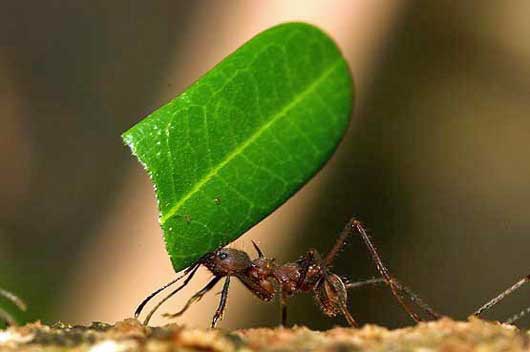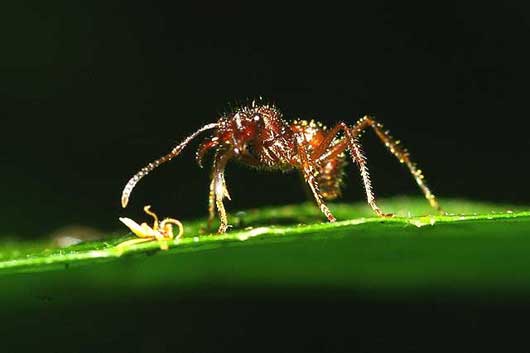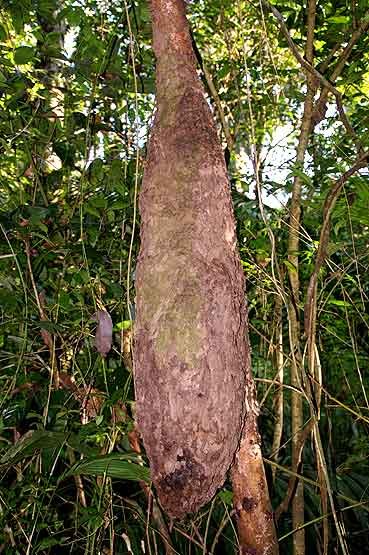Discovering Panama's Beauty
Photobook from Panama

Introducing our captivating photo book showcasing the mesmerizing flora and fauna of Panama!
Dive into the vibrant world of biodiversity with stunning imagery capturing the essence of Panama's natural wonders.
From majestic birds to elusive wildlife and breathtaking landscapes, this book is a visual feast for nature enthusiasts.
Don't miss your chance to own a piece of Panama's natural heritage.
Order your copy now and embark on a visual journey through the enchanting landscapes and fascinating wildlife of Panama HERE FROM AMAZON!
Ants
Wildlife of Panama
There are tens of thousands of ant species but here we describe 3 of them that you can encounter in the rain forests:

Leaf Cutter Ants
Leaf-cutter
ants are relatively large, rusty red
or brown in color, and have a spiny
body and long legs. The ants of the
Atta group monoculture fungus for
food by removing competing fungi
from their gardens. To do this, they
harvest many different types of
plants and plant materials,
including leaves, flowers, seed
husks, and stems. They use this
material as a substrate for the
fungus. For more information on the
Leaf Cutter Ants please see this
page here at Wikipedia.

Army Ants
The name army ant
(or legionary ant or marabunta) is
applied to over 200 ant species, in
different lineages, due to their
aggressive predatory foraging
groups, known as "raids", in which
huge numbers of ants forage
simultaneously over a certain area.
During their hunt, many
surface-raiding army ants are
accompanied by various birds, such
as antbirds, thrushes,ovenbirds and
wrens, which devour the insects that
are flushed out by the ants, a
behavior known as cleptoparasitism.
Therefore bird watchers are keen to
find follow and observe the birds
around the army ant trails.
For more information on the Army
Ants please see this
page here at Wikipedia.

Azteca andreae ant tree Nest
Azteca andreae is an arboreal ant species found in the tropics. Often, the ants will not only receive housing from the plant; they will eat extrafloral nectar and food bodies that the plant provides. In return, the plant receives security from herbivores that may eat the plant, because the ants hunt on the plant and eat many of the plant’s predators. This symbiosis benefits both the plant and ants.
Sometimes old and or abandoned and nests are used as homes for some birds. Trogon nests for example are dug into rotting wood or termite nests, with one species, the Violaceous Trogon, nesting in wasp nests.
Discovering Panama's Beauty
Photobook from Panama

Introducing our captivating photo book showcasing the mesmerizing flora and fauna of Panama!
Dive into the vibrant world of biodiversity with stunning imagery capturing the essence of Panama's natural wonders.
From majestic birds to elusive wildlife and breathtaking landscapes, this book is a visual feast for nature enthusiasts.
Don't miss your chance to own a piece of Panama's natural heritage.
Order your copy now and embark on a visual journey through the enchanting landscapes and fascinating wildlife of Panama HERE FROM AMAZON!
